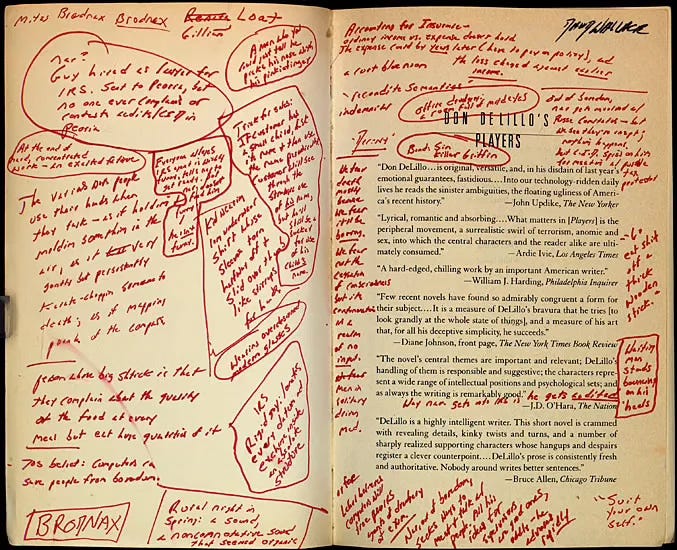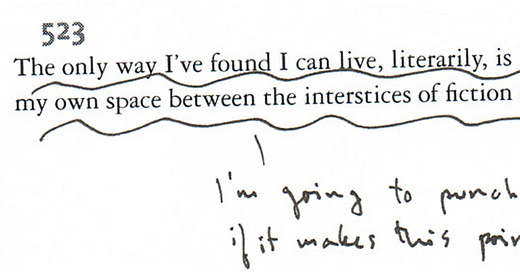Marginalia is fascinating for lots of reasons.
For one, everyone does it differently. Folks use different symbols, colors, and markings. Some even make threats in margins.
Readers know that to read is to enter a conversation. Marking our books is one way to enter that dialogue. How we mark texts is the particular dialect we bring to said conversation.
It’s the way we track ideas, register disagreements, and mark paragraphs to return to for a smaller side convo at a later date.
“In getting my books, I have always been solicitous of an ample margin; this is not so much through any love of the thing in itself, however agreeable, as for the facility it affords me of penciling in suggested thoughts, agreements, and differences of opinion, or brief critical comments in general.”
Edgar Allan Poe, 1844
The Margins: A Place to Converse with Texts and Past Yourself
Perhaps the most exciting part of marginalia is the conversation it offers us with previous versions of ourselves.
Some think the chief benefit of writing in your books is the ability to recall info.
It’s not.
The real bounty is a record of your reaction, a recording of how you engaged a particular text in one frozen moment in your vapor of a life.
Marginalia is a diary within a text, capturing the movements of one’s intellectual and spiritual life.
I write all this because I recently returned to my first copy of St. Augustine’s Confessions. I first read Confessions as an undergrad in a course on Western Civilization. It was the first perfect book at the perfect time for me. (One could also argue there is never not a perfect time to read Confessions.)
Waffling as I was between Christianity and hedonism, Augustine’s story didn’t just hit close to home; it kicked in my front door.

I recently flipped through my copy of Jamie Smith’s classic Desiring the Kingdom. I was surprised to see how attentive I was to his footnotes, tracing his arguments upstream and marking numerous texts for further exploration.
Five or so years later, these texts were vital in my move from a non-denominational church into a liturgical tradition. I had forgotten that my ecclesial journey began in the margins.
More on marginalia:
Billy Collins’s poem “Marginalia”
Sam Anderson’s “A Year of Marginalia”
Noted, by Jillian Hess, one of the neatest Substacks around, has a rundown on the topic
Jacob Allee’s On the Marking of Books
Perhaps buy my book on sale, write a review online, and then write in the margins.
Let me know how you do your marginalia—bonus points for photos of how you mark up your texts.
P.S. — If you want to experience an immersive reading that includes marginalia, check out J.J. Abrams and Doug Dorst’s novel, S. I bought it a few years back for my father-in-law. He hasn’t read it yet, but perhaps now he will when he sees this :)





I buy most books used because it broadens the conversation between me and the author to include a third opinion. Even just someone else’s underlining gives me pause, “why did he or she think that was important. Am I missing something?”
I love writing in books. Also my ancient copy of Confessions has some gems in it too! Never a not perfect time to read it, as you said